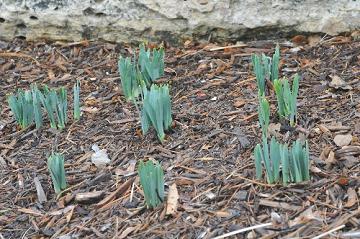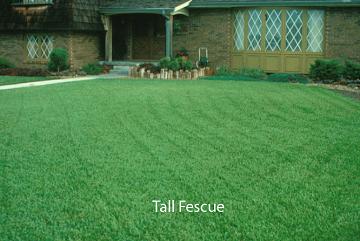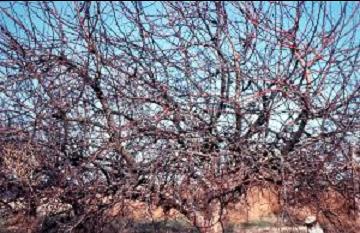Video of the Week:
Succulents and Cacti: How to Water
Flowers:
Handling Tips for Valentine's Day Roses

For floral arrangements:
1) Keep the vase filled or floral foam soaked with warm water. Add fresh, warm water daily. If the water turns cloudy, replace it immediately. If possible, recut stems by removing one to two inches with a sharp knife. Do this under water. This allows the stems to draw in water instead of air.
2) Keep flowers in a cool spot (65 to 72 degrees Fahrenheit), away from direct sunlight, heating or cooling vents, directly under ceiling fans, or near radiators.
3) If a rose starts to wilt, remove it from the arrangement, and recut the stem under water. Submerge the entire rose in warm water. The rose should revive in one to two hours.
For loose stems:
1) If you can't get your flowers in a flower food solution right away, keep them in a cool place.
2) Fill a clean, deep vase with water and add the flower food obtained from your florist. Be sure to follow the directions on the package.
3) Remove leaves that will be below the waterline. Leaves in water will promote bacterial growth.
4) Recut stems under water with a sharp knife and place the flowers in the vase solution you've prepared.
(Ward Upham)
Fertilizing Spring Flowering Bulbs

Nutrients applied then help the plant produce flowers the following year. If bulbs have been fertilized in the past, there is often plenty of phosphorus and potassium in the soil. It is best to use a soil test to be certain. If the soil needs phosphorus and potassium, use a complete fertilizer (such as 10-10-10, 9-9-6, etc.) at the rate of 2.5 lbs. per 100 square feet. This would equal 1 rounded teaspoon per square foot. If phosphorus and potassium are not needed, blood meal makes an excellent fertilizer. It should be applied at the rate of 2 lbs. per 100 square feet or 1 teaspoon per square foot. Lawn fertilizers such as a 27-3-3 or 30-3-3 can be used, but cut the rate by a third. Also make sure the lawn fertilizer does not contain a weed preventer or weed killer.
Remember to leave the foliage until it dies naturally. The energy in the foliage is transferred to the bulb as the foliage dies and will help bloom next year. (Ward Upham)
Turfgrass:
Lawn Calendar for Cool-Season Grass

March
Spot treat broadleaf weeds if necessary. Treat on a day that is 50 degrees or warmer. Rain or irrigation within 24 hours of application will reduce effectiveness.
April
Apply crabgrass preventer when redbud trees are in full bloom, usually in April. The preventer needs to be watered in before it will start to work. One-quarter inch of water will be enough to water in any of the products mentioned in this calendar. Remember that a good, thick lawn is the best weed prevention and may be all that is needed.
May
Fertilize with a slow-release fertilizer if you water your lawn or if you receive enough rainfall that your turf normally doesn’t go drought-dormant during the summer. If there are broadleaf weeds, spot treat with a spray or use a fertilizer that includes a weed killer. Rain or irrigation within 24 hours of application will reduce effectiveness of the weed killer, but the fertilizer needs to be watered in. If you are using a product that has both fertilizer and weed killer, wait 24 hours after application before watering in.
June through Mid-July
Apply second round of crabgrass preventer by June 15 – unless you have used Dimension (dithiopyr) or Barricade (prodiamine) for the April application. These two products normally provide season-long control with a single application. Remember to water it in. If grubs have been a problem in the past, apply a product containing imidacloprid during the first half of July. This works to prevent grub damage. It must be watered in before it becomes active.
Late-July through August
If you see grub damage, apply a grub killer that contains Dylox. Imidacloprid is effective against young grubs and may not be effective on late instar grubs. The grub killer containing Dylox must be watered in within 24 hours or effectiveness drops.
September
Fertilize around Labor Day. This is the most important fertilization of the year. Water in the fertilizer.
November
Fertilize. This fertilizer is taken up by the roots but is not used until the following spring. Water in fertilizer. Spray for broadleaf weeds even if they are small. Broadleaf weeds are much easier to control in the fall than in the spring. Spray on a day that is at least 50 degrees. Rain or irrigate within 24 hours reduces effectiveness. Use label rates for all products! (Ward Upham)
Fruit:
Pruning Overgrown Apple Trees

Often the best recommendation for such a tree is to make one pruning cut at ground level and start over with a new tree. However, trees may have sentimental value that will make revitalization worth the time and effort. Realize that this will be a multi-year process because no more than 30 percent of the tree should be removed in one year. Here are some steps to follow:
1. Remove all dead wood. This does not count toward the 30 percent.
2. Remove suckers from the base of the tree.
3. Choose approximately six of the best branches to keep as scaffold branches. Remove all others. Branches should be cut flush to the branch collar. The collar is the natural swelling that occurs where a branch connects to the trunk or to a larger branch. Removing the collar would leave a larger wound that would take additional time to heal. Do not paint wounds. Wounds heal more quickly if left open.
Candidates for removal include branches with narrow crotch angles, which are more likely to break in wind and ice storms, and those that cross branches you will save. This may be all that is possible the first year if the 30 percent threshold has been reached.
4. Thin the branches on each scaffold branch. Remove crowded branches to open up the tree to light and allow humidity to escape. Shorten each scaffold branch by cutting back to a side branch. When you are through, the tree should have enough wood removed so that a softball can be thrown through the tree.
Severe pruning often will cause an apple to tree to produce vigorous side shoots from the trunk called water sprouts. Main branches will also produce suckers that grow straight up. The suckers and water sprouts should be removed throughout the growing season so the center of the tree stays open. (Ward Upham)
Miscellaneous:
Soil Temperature and Vegetables
A number of vegetables can germinate and grow at cool temperatures. For example, peas will germinate and grow well at a soil temperature of 40 F. Though lettuce, parsnips, and spinach can sprout at a soil temperature of 35 F, they prefer at least 45 F for best germination and growth.
Radishes also do well at a soil temperature of 45 F. Warm-season crops such as tomatoes, sweet corn and beans prefer at least 55 F for germination (or transplanting), but others such as peppers, cucumbers, melons and sweet potatoes need it even warmer, about 60 F.
Taking soil temperature accurately is a bit of a science. First, use a metal soil thermometer, which is sold in many garden and hardware stores. Take temperature 2.5 inches deep at about 10 to 11 a.m. Temperature variations throughout the day and night affect soil temperature, with lowest readings after dawn and warmest around mid-afternoon. The late-morning reading gives a good average temperature. If taking the soil temperature at this time is not practical, take a reading before you leave for work and a second when you return home and use the average. Also be sure to get a consistent reading for four to five days in a row before planting, and make sure a cold snap is not predicted.
An excellent guide sheet on this subject is published by the Alabama Cooperative Extension System and is titled “Soil Temperature Conditions for Vegetable Seed Germination.” (Ward Upham)
Soil Testing

Begin by taking a representative sample from a number of locations in the garden or lawn that goes from the surface to 6 to 8 inches deep. Mix the samples together in a clean container and select about 1 pint of soil. For more detail on taking a soil test, see http://www.agronomy.ksu.edu/soiltesting/p.aspx?tabid=40. Take the soil to your local K-State Research and Extension office to have tests done at the K-State soil-testing laboratory for a small fee. A soil test determines fertility problems, not other conditions that may exist such as poor drainage, poor soil structure, soil borne diseases or insects, chemical contaminants or damage, or shade with root competition from other plants (see accompanying article). All of these conditions may reduce plant performance but cannot be evaluated by a soil test. (Ward Upham)
What a Soil Test Does Not Tell You

Here are some factors that can affect plant growth that are not due to nutrient deficiencies or pH.
Not enough sun: Plants need a certain minimum amount of sun before they will grow well. As a general rule, flowering (and fruiting) plants need at least 6 to 8 hours of full sun per day. There are, of course, exceptions such as impatiens that bloom well in shade. Move sun-loving plants out from the shade or use plants that are better adapted to shady conditions.
Poor soil physical characteristics: Roots need oxygen as much as they need water. A tight clay soil or excessive water can restrict soil oxygen levels as well as make root penetration of the soil difficult. Increasing the organic matter content of clay soils can help break them up. Add a 2-inch layer of organic matter and till it in.
Walnut trees: Walnuts give off a natural herbicide that interferes with the growth of some plants such as tomatoes. Vegetable gardens should be at least 50 feet away from walnut trees if possible. For a listing of plants that are susceptible to walnut, go to: http://www.omafra.gov.on.ca/english/crops/facts/info_walnut_toxicity.htm
Tree roots: Trees not only compete with other plants for sun but also for water and nutrients. Extra water and nutrients may be needed.
Shallow soils: When new homes are built, the topsoil is often stripped off before the soils are brought to grade. Though the topsoil should be replaced, it sometimes is not or is not replaced to the same depth as it was originally. You are left with a subsoil that usually does not allow plants to grow well due to a lack of soil structure. Adding topsoil to a depth of 8 to 12 inches would be best but this often is not practical. In such cases, try to rebuild structure by adding organic matter and working it into the soil.
Too much phosphorus: Most Kansas soils are naturally low in phosphorus. However, soils that have been fertilized for a number of years may have phosphorus levels that are quite high. As a matter of fact, the majority of soil tests we receive show phosphorus levels in the "high" category. Too much phosphorus can interfere with the uptake of some micronutrients such as iron, manganese and zinc. High phosphorus soils should only be fertilized with fertilizers that have relatively low amounts of phosphorus.
Improper watering: Roots develop where conditions are best for growth. Shallow, frequent watering leads to roots developing primarily near the surface of the soil where the soil is moist. Such shallow root systems are easily damaged by heat and any interruption in the watering schedule. It is better to water less frequently and to a greater depth to encourage a deeper root system that is less sensitive to heat and water stress.
Watering during the evening can also be detrimental to plants if the irrigation wets the foliage. Many diseases are encouraged by free water on the leaves. Watering late in the day often will keep the foliage wet until dew forms. Dew will keep the foliage wet until it evaporates the next morning. It is better to water early in the morning so leaves do not stay wet as long. If you must water late in the day, use drip irrigation if practical (such as in a vegetable garden).
Overwatering: Roots need to breathe. In other words, they must have oxygen in order to survive. Be careful to not water so much that the soil remains saturated. Water deeply but allow soil to dry somewhat between waterings. (Ward Upham)
"Selling at Farmer's Markets" Webinar for KSRE Professionals Archived
Contributors: Ward Upham, Extension Associate
 RSS Feed
RSS Feed
